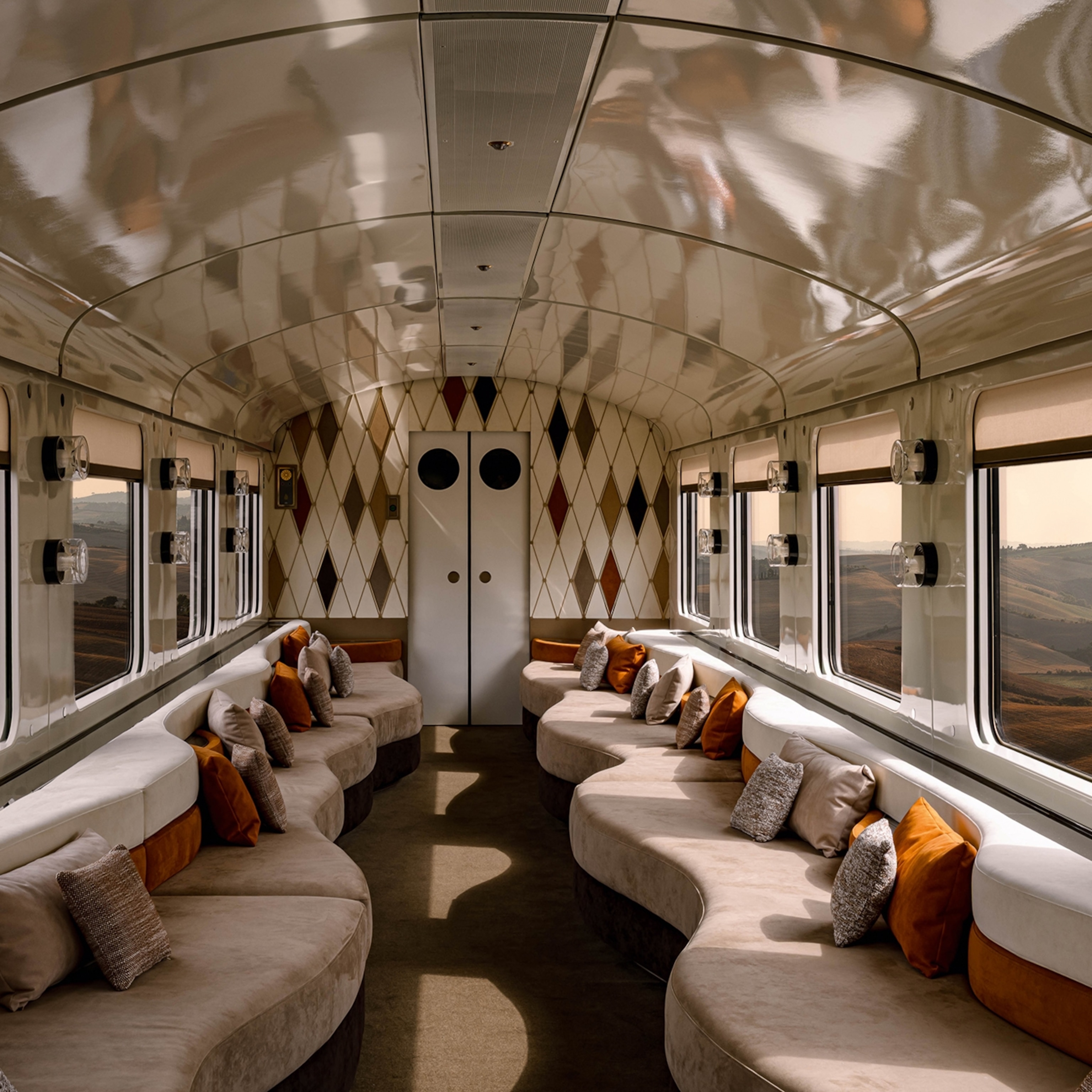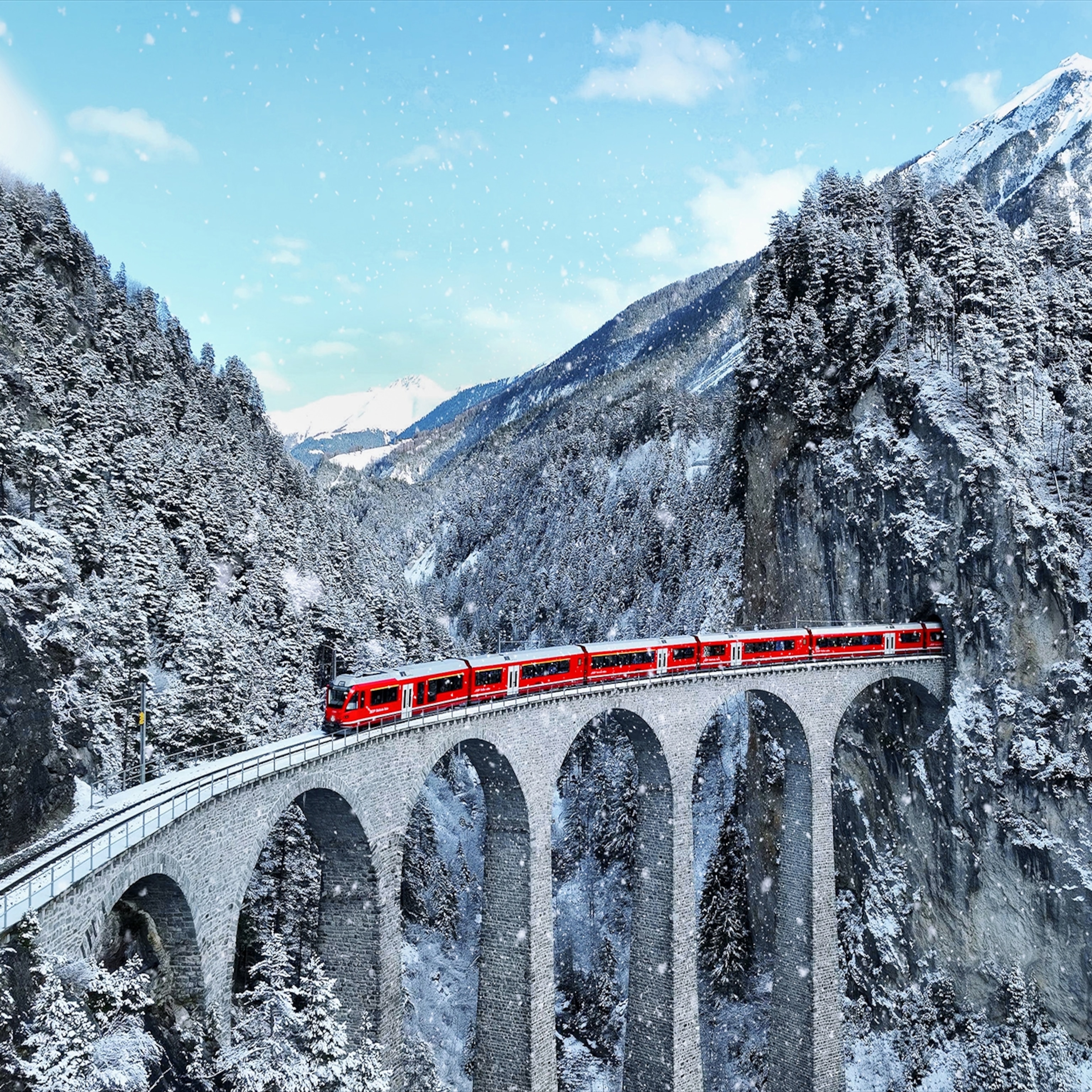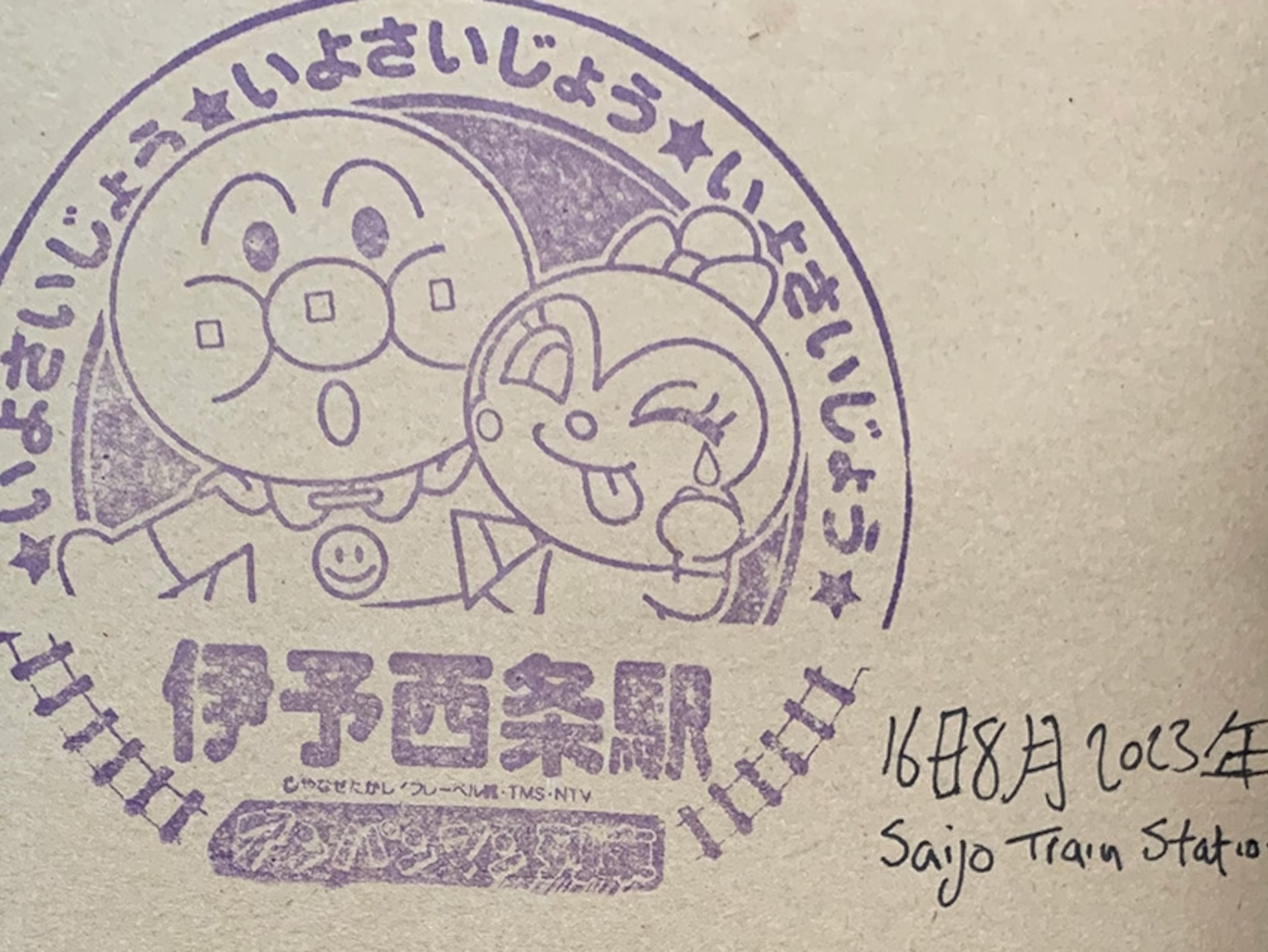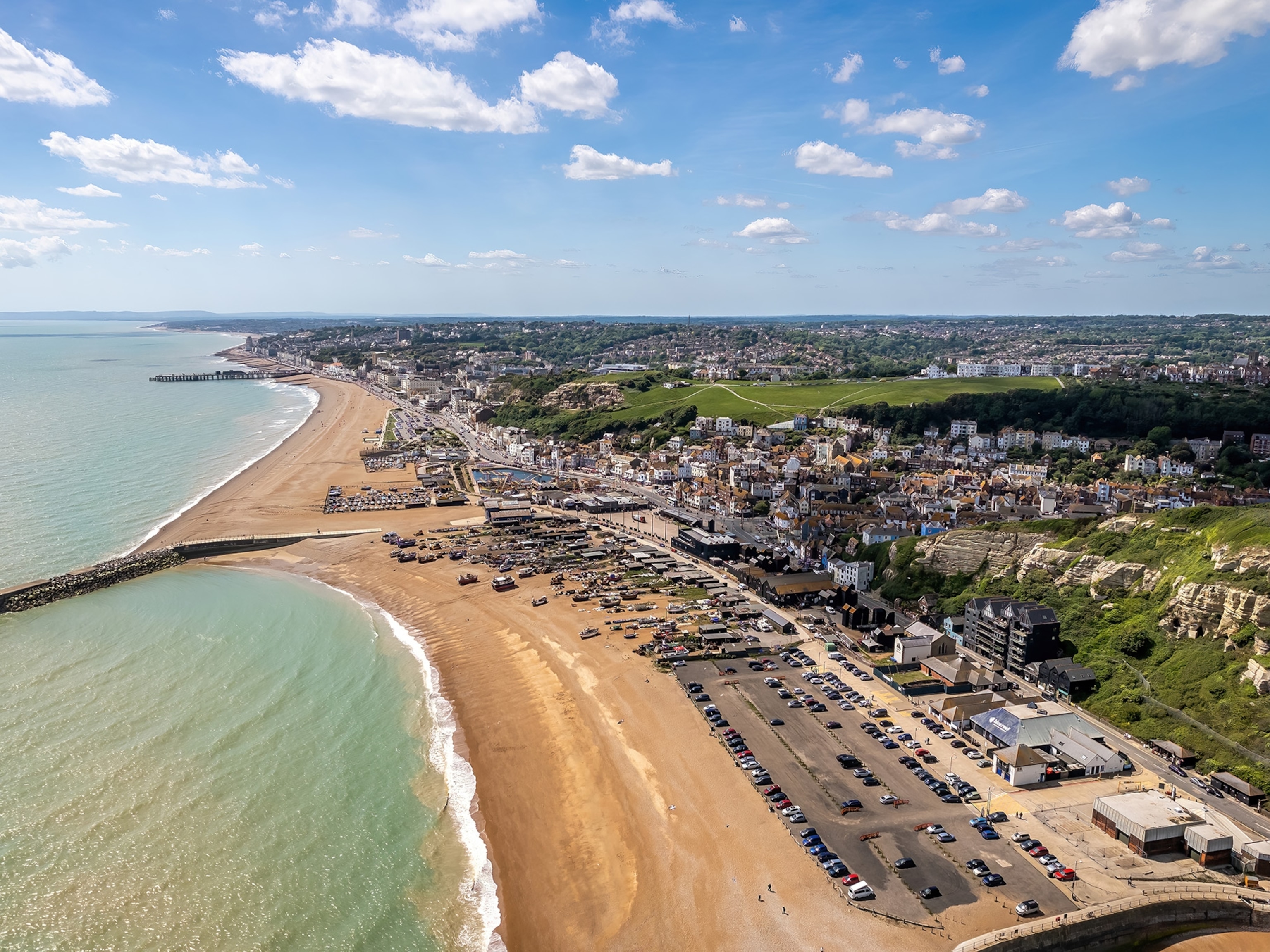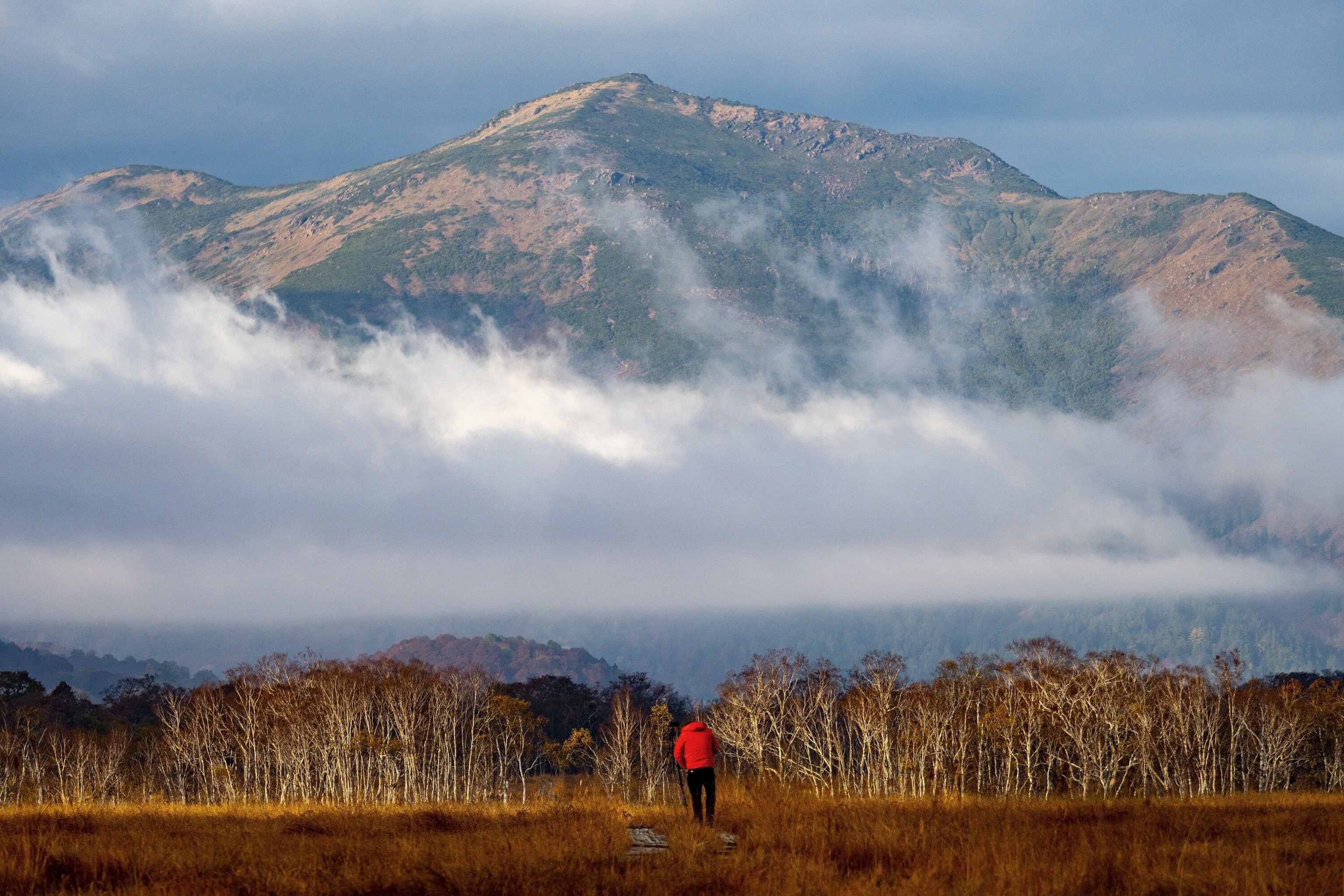
A nature-lover’s guide to slow train travel in Japan
The Hokuriku Arch Pass to Japan’s ‘New Golden Route’ rail line is making some of the country’s most spectacular scenes accessible for travellers. Learn about the best spots for leisurely lakeside cycles, sprawling wetlands and tranquil farmlands.
Before the launch of Japan’s New Golden Route train line, the striking scenery between Tokyo and Osaka would pass by most travellers in a 185mph blur of blue-green and grey. Opting to instead book a Hokuriku Arch Pass, visitors will have easy access to Japan’s countryside, to paddies, Alps, roaring waterways and wide woodlands scattered across Honshu. Partake in these activities on your journey to get hands-on with some of Japan's most beautiful regions.
1. Rafting and canyoning on the Tone River, Minakami
The Minakami region tucks itself into the north of Gunma, where the great Tone River begins its rushing journey south to Tokyo. The Tone’s source is in Minakami’s Eco Park, a UNESCO biosphere where colliding climates from the Sea of Japan and the Pacific bring heavy snowfall in the winter, perfect for skiing and snowboarding and also Japan’s best rafting during the summer season. Under the shadows of snow-painted peaks, raft through 15 miles of grade four white waters and close tree-lined canyons. The ride is rapid, rollicking fun and entirely wet.
Canyoning helped put Minakami’s waning onsen resort back on the tourist map; now it’s internationally recognised by adventurers. Fox Canyon provides a great entry level, with jumps and slides into the breathtaking falls and rivers. Willow is for the more experienced, with waterfall abseiling, rope work and a whole series of speeding, slippery sliders.
Details: Book half-day, full-day and combined tours with the aptly named Canyons. From ¥9,500 (£55).
2. Hunt for gems on the Jade Coast, Niigata
Itoigawa’s small station on Niigata’s south coast is the gateway to Japan’s remarkable Jade Coast. The jade doesn’t actually start life on the shore, but in the deep Kotakigawa and Omigawa gorges. Formed by a tectonic split, these valleys are Japan’s largest jade producer. Shards of mint and shamrock-coloured stone wash down the rivers to settle on the coastline, where they can be picked up by visitors. Have your coastal collection appraised at Itoigawa’s Fossa Magna Museum, where you can learn about this prized stone that’s helped form Japan’s history. The country has the oldest jade culture in the world, with stones dating back 6,000 years, and has such a connection with its people that it was voted the national stone in 2016.
Details: Fossa Magna Museum’s fossil, jade and mineral hub operates free appraisals for beach-combed jade. Entrance ¥500 (from £3).
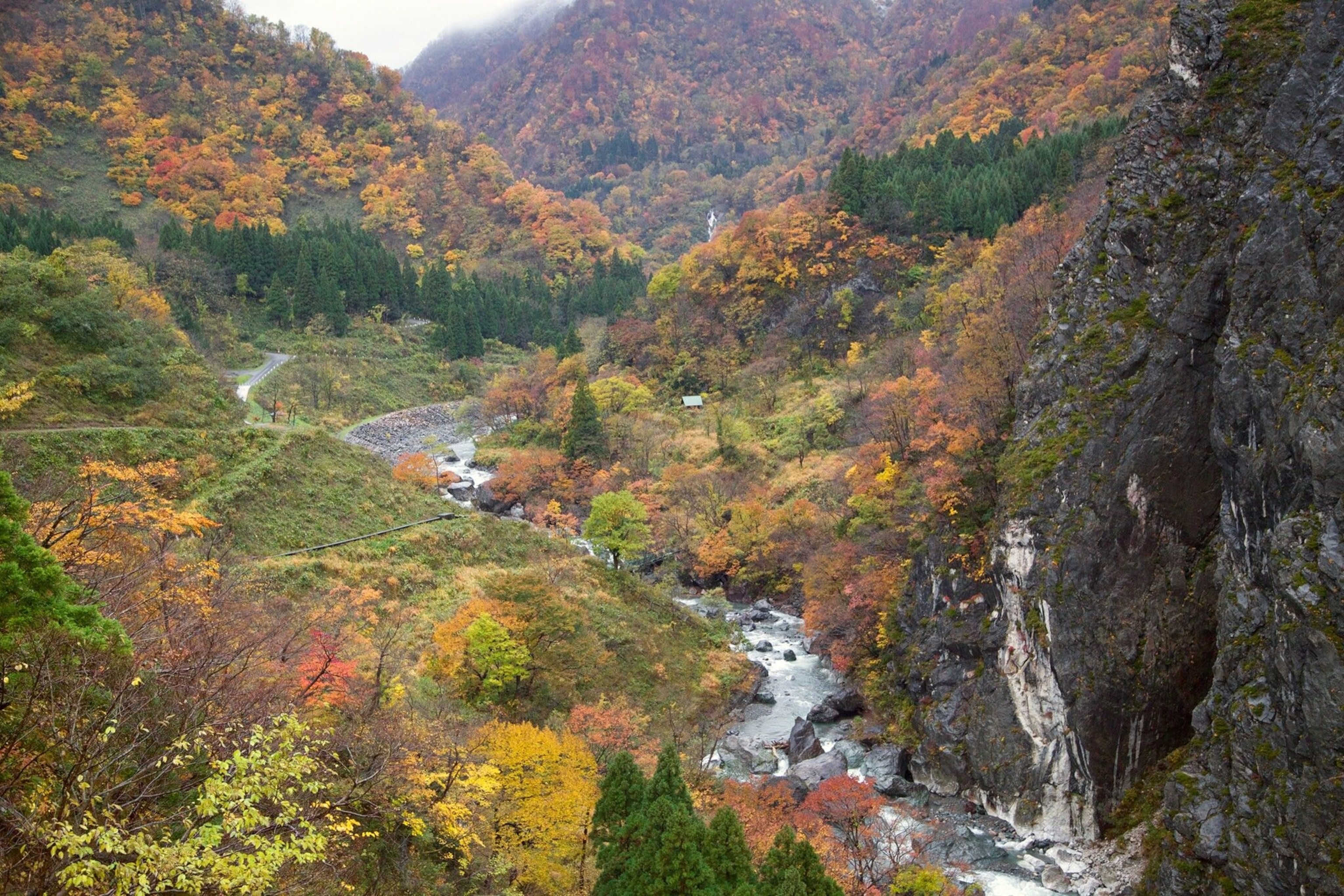
3. Learn about agriculture in the Noto Peninsula
Soaring northwards, the rarely visited, remarkably rural Noto Peninsula juts out into the Japan Sea. Noto has a unique farming method recognised as a Globally Important Agricultural Heritage System. Known as satoyama (mountainscape) and satoumi (seascape), they’re a co-existing miscellany of remote villages, wild nature and agricultural land that produces extraordinarily fresh, seasonal food. Step off the train at Wakura Onsen and join a cycle tour around Notojima, an island known for its sustainable agriculture and slow-paced lifestyle. First connected to the mainland by bridge in 1982, the island is a time capsule where you can chat to local fisherman and farmers before tucking into their renowned produce.
Details: Join Noto Note’s local guides on 3.5-hr cycle tours, ¥7,500 (£45).
4. Tour the Five Lakes, Mikata
You barely glimpse the glittering Five Lakes pulling into Mikata station. A short walk from your stop, however, and Fukui’s Wakasa Bay waterscape opens up. Known as the Mikatagoto, this quintet of shaded wetlands form part of Wakasa Wan Quasi-National Park. They’re a geographical phenomenon, each with its own colour, depth and salt concentration, and their quirks continue under the surface. The lakes contain varve, a striped sedimentary rock that marks the passing years like the rings of a tree. Lake Suigetsu’s perfect conditions have earned it the nickname ‘miracle lake’ by geologists, who have tracked 70,000 years of unbroken varve in its depths. Tour the lakes two ways: a guided kayak course on Suigetsu’s placid waters or take the cable car to the Rainbow Line’s terraces overlooking the undulating islets and pine-blanketed promontories.
Details: Join Attractive Japan’s kayak and museum course with English-speaking guides, ¥7,000 (£42).

5. Cycle around Lake Biwa, Shiga
Before giving way to Kyoto’s temple-strewn streets, the rail route sidles around the shores of Lake Biwa. Biwako (Japan’s largest lake) is so big it nearly carves the country in two, and its vast stretch is an idyll for cycling and watersports. Hiring a bike at one of the JR stations en route lets you tackle as much of the Biwa cycle as you like — known locally as Biwaichi. Experienced cyclists can go around its entire scenic 145 miles in two days, but day-trippers should look to its smaller southern basin. Charmingly truncated, this 30-mile section shows off beaches, botanical gardens and Biwako’s grandiose bridge.
Details: Self-tour Biwako by reserving a bike by the hour, day or multi-day at Otsu Station Tourist Centre, from ¥250 (£1.50).
Plan your trip
Book your trip on the New Golden Route by getting the Hokuriku Arch Pass, for ¥24,500 (£146), if bought overseas. This seven-day ticket covers 13 prefectures between Tokyo and Osaka, featuring the Hokuriku Shinkansen line.
Follow National Geographic Traveller (UK) on social media
